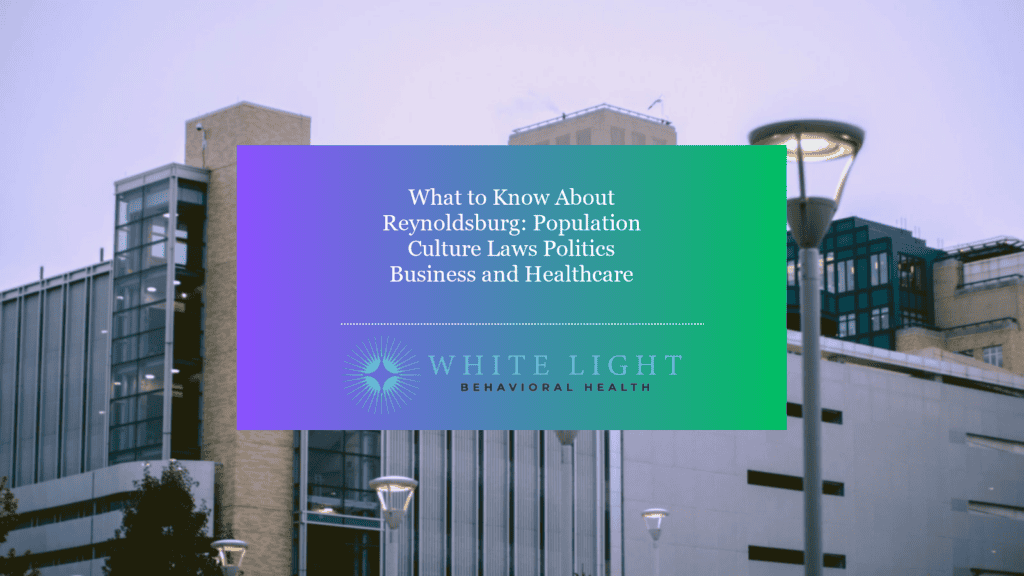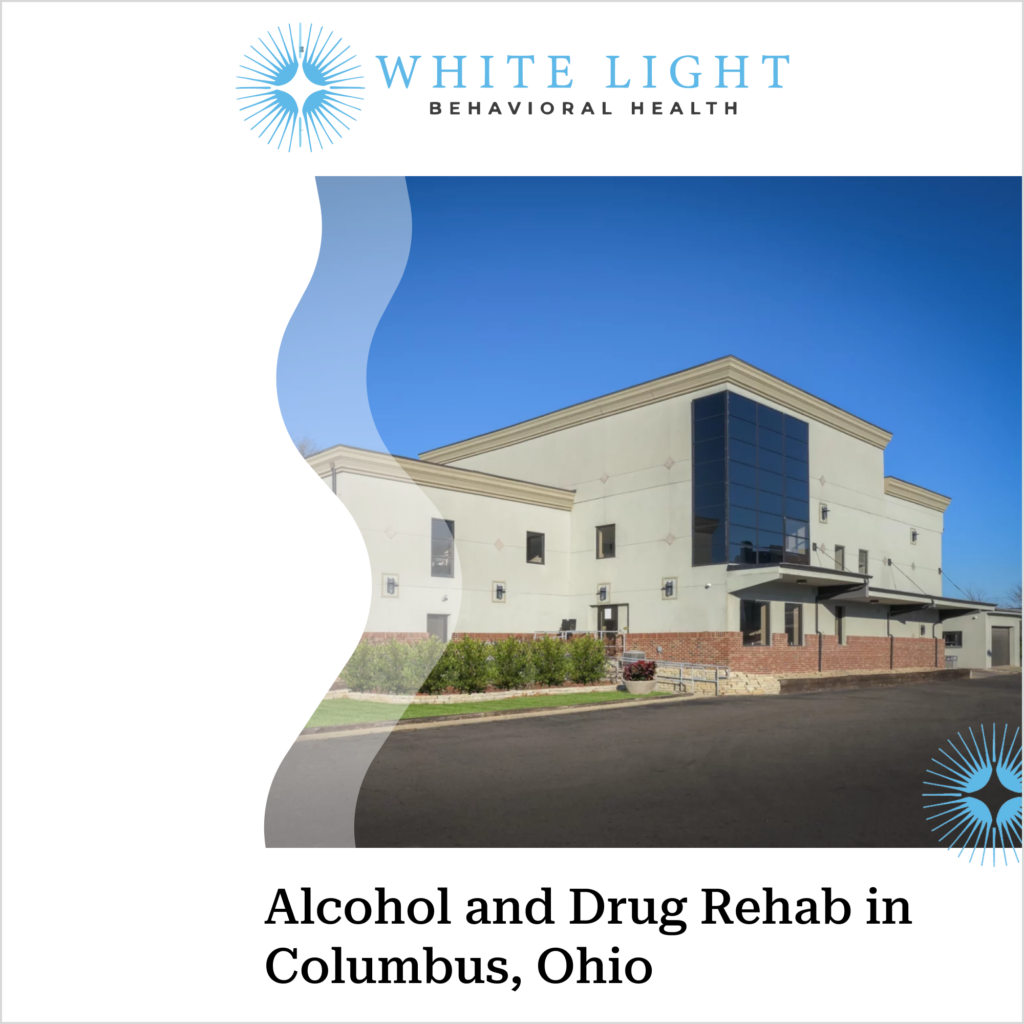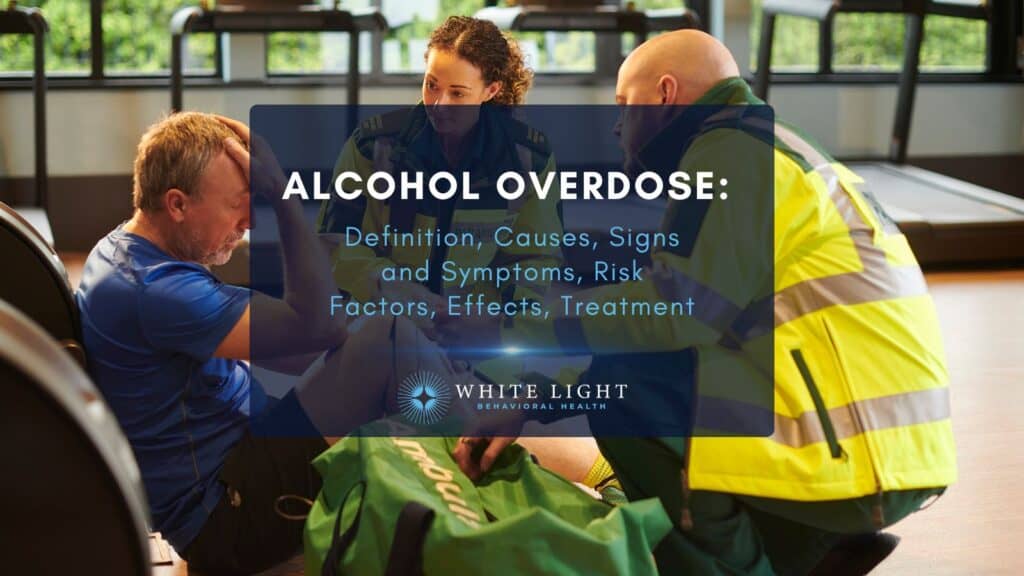What to Know About Reynoldsburg: Population Culture Laws Politics Business and Healthcare

Reynoldsburg is a suburban community in Franklin County, Ohio housing approximately 41,000 residents within the county’s total population of 1.3 million people (Ohio Census, 2020). The city reflects Ohio’s broader demographic composition of 80.6% White, 13.4% Black, and 4.8% Hispanic residents, while maintaining educational achievement levels with 91.6% high school graduation rates and 30.9% bachelor’s degree attainment among adults (US Census Bureau, 2024). Reynoldsburg operates within Ohio’s robust $727.3 billion GDP economy that recorded a 2.5% increase in 2024, supported by manufacturing industries contributing $106 billion annually to the state’s economic output (US Bureau of Economic Analysis, 2024). The community exists within Ohio’s Republican-dominated political landscape where GOP candidates hold supermajorities in both legislative chambers and control all 6 statewide executive offices as of 2023 (Ballotpedia, 2023). Healthcare access benefits from Ohio’s proximity to nationally-ranked facilities like Cleveland Clinic, ranked among the top 5 hospitals in America, though residents face a state life expectancy of 74.5 years and benefit from dramatic improvements in overdose death rates that declined 35% in 2024 from 4,847 to 3,136 fatalities statewide (U.S. News & World Report, 2023).What is Reynoldsburg’s Population and Demographics?
Reynoldsburg’s population is approximately 41,000 residents as part of Franklin County, Ohio’s most populous county with 1.3 million residents (Ohio Census, 2020). The city’s demographic composition mirrors broader Franklin County patterns, reflecting Ohio’s statewide racial distribution of 80.6% White, 13.4% Black, and 4.8% Hispanic or Latino residents (US Census Bureau, 2024). Population demographics in Reynoldsburg align with county-wide trends within the Columbus metropolitan area. Franklin County’s status as Ohio’s largest population center influences local demographic characteristics and residential patterns.
Age distribution in Reynoldsburg follows Ohio’s demographic patterns, where 18.7% of residents are age 65 or older and 21.9% are under 18 years old (US Census Bureau, 2024). The community’s foreign-born population reflects Ohio’s 5.3% foreign-born rate, significantly below the national average of 14% (US Census Bureau, 2023). Language diversity patterns indicate approximately 7.7% of households speak non-English languages at home, consistent with statewide linguistic demographics. Reynoldsburg’s demographic profile demonstrates typical suburban Franklin County characteristics within Ohio’s population distribution framework.
Economic demographics in Reynoldsburg correlate with Ohio’s median household income of $67,800 and per capita income of $39,400 annually (US Census Bureau, 2023). Educational attainment levels mirror state patterns where 91.6% of adults hold high school diplomas and 30.9% possess bachelor’s degrees or higher (US Census Bureau, 2023). Housing characteristics reflect Ohio’s 67.0% homeownership rate with median home values around $199,200 (US Census Bureau, 2023). Population growth in Reynoldsburg corresponds to Ohio’s modest 0.7% growth rate from 2020 to 2024, demonstrating stable demographic expansion patterns. Did you know most health insurance plans cover substance use disorder treatment? Check your coverage online now.How Does Reynoldsburg Fit Within Ohio’s Cultural Landscape?
Reynoldsburg fits within Ohio’s cultural landscape as a suburban community that reflects the state’s broader demographic patterns and provides direct access to Ohio’s premier cultural attractions. Located just 15 miles east of Columbus, residents benefit from proximity to major cultural sites while living in a community that mirrors Ohio’s religious composition, where 64% of adults identify as Christian and 29% have no religious affiliation (Pew Research Center, 2024). The city’s position within Franklin County connects residents to Ohio’s largest metropolitan area, home to approximately 2.1 million people (US Census Bureau, 2022).
Reynoldsburg’s cultural identity connects directly to Ohio’s historic legacy as the “Birthplace of Aviation” through easy access to Dayton’s Wright Brothers heritage sites and the National Museum of the U.S. Air Force, ranked as Ohio’s #2 attraction (TripAdvisor, 2024). The community’s proximity to Columbus provides access to the hometown of golf legend Jack Nicklaus, winner of a record 18 major championships (PGA, 2018). Cultural attractions within driving distance include Cleveland’s Rock & Roll Hall of Fame, Ohio’s top-ranked tourist destination, contributing to the state’s $57 billion tourism industry that welcomed 242 million visitor trips in 2024 (TourismOhio, 2024).
The city’s residents participate in Ohio’s broader cultural heritage, including access to Cedar Point’s 17 roller coasters and Cincinnati’s Oktoberfest Zinzinnati, which draws over 500,000 visitors annually as the largest Oktoberfest celebration outside Germany (Spectrum News, 2021). Reynoldsburg’s cultural landscape reflects Ohio’s position as the “Mother of Presidents” with seven U.S. Presidents born in the state, while residents maintain connections to Ohio’s manufacturing heritage through the state’s 690,000 manufacturing workers comprising 12% of the workforce (BLS, 2023).What are the Local Laws and Regulations in Reynoldsburg?
Reynoldsburg operates under Ohio state laws and regulations that include the 2022 permitless concealed carry law allowing adults 21+ to carry handguns without licenses (CNN, 2022). The city enforces Ohio’s minimum wage of $10.45 per hour effective January 2024, increasing from $10.10 in 2023 and indexed to inflation (Ohio Dept. of Commerce, 2023). Local law enforcement implements state-level legislative changes while maintaining municipal ordinances for community safety and regulatory compliance.
Recent ballot measures significantly impact Reynoldsburg’s legal framework through statewide voter approval of recreational marijuana legalization (Issue 2) with 57.1% approval in November 2023 (Ohio Ballotpedia, 2023). Ohio voters also passed a constitutional amendment protecting abortion rights (Issue 1) with 56.6% approval during the same election cycle (Ohio Sec. of State, 2023). These regulatory changes require local municipalities to adapt enforcement protocols and zoning regulations accordingly.
Ohio’s criminal justice system affects Reynoldsburg through the state’s effective pause on death penalty executions since 2018, with no executions carried out in recent years (Death Penalty Info Center, 2023). The city operates within Franklin County’s jurisdiction, which serves approximately 1.3 million residents and surpassed Cuyahoga County as Ohio’s most populous county (Ohio Census, 2020). Reynoldsburg residents benefit from state-mandated worker protections and updated firearms regulations while adhering to local zoning and municipal codes.How Does Ohio’s Political Climate Affect Reynoldsburg?
Ohio’s political dominance by Republican leadership directly influences Reynoldsburg through state-controlled policy implementation and resource allocation decisions. Republicans control over two-thirds of seats in both Ohio’s Senate and House, establishing supermajorities that shape municipal governance across Franklin County (Ballotpedia, 2023). All six statewide executive offices including Governor, Lieutenant Governor, and Attorney General are held by Republican officials as of 2023 (Ohio Sec. of State, 2023). This comprehensive GOP control affects Reynoldsburg’s local political climate through state mandates, funding distributions, and regulatory frameworks that city officials must navigate.
The state’s political trajectory reinforces conservative governance affecting Reynoldsburg’s municipal operations and policy directions. Ohio’s U.S. House delegation maintains a 10 Republican to 5 Democrat ratio, reflecting GOP advantages that influence federal funding priorities for central Ohio communities (Ohio Capital Journal, 2022). Donald Trump secured Ohio with 53.3% versus 45.2% in the 2020 presidential election, marking an 8-percentage-point victory that demonstrates the state’s rightward political shift (Ohio Secretary of State, 2020). This political realignment contrasts sharply with Ohio’s former status as a national bellwether state from 1964 through 2016, when it consistently voted for winning presidential candidates (LSE US Centre, 2021).
Governor Mike DeWine’s overwhelming electoral mandate reinforces Republican policy implementation affecting Reynoldsburg’s governance structure and state relationship. DeWine secured re-election in 2022 with 63% of votes, achieving a landslide 25-point victory that strengthens GOP influence over municipal affairs (AP News, 2022). Ohio’s current U.S. Senate representation splits between Democrat Sherrod Brown (serving since 2007) and Republican JD Vance (who took office in 2023), creating mixed federal advocacy for central Ohio communities (U.S. Senate, 2023). This political configuration shapes Reynoldsburg’s access to federal programs, state funding mechanisms, and regulatory compliance requirements that directly impact city operations and resident services.What Business Opportunities Exist in Reynoldsburg?
Business opportunities in Reynoldsburg benefit from Ohio’s robust $727.3 billion GDP economy that achieved 2.5% growth from 2023 to 2024 (US Bureau of Economic Analysis, 2024). Manufacturing enterprises represent the strongest business opportunity, with Ohio’s manufacturing sector contributing $106 billion to the state’s real GDP in 2023—the largest share of any industry (BEA/Statista, 2024). Reynoldsburg entrepreneurs access a skilled workforce of 690,000 manufacturing workers representing 12% of Ohio’s total workforce (BLS, 2023). The city’s proximity to Columbus positions businesses within Ohio’s economic hub that houses multiple Fortune 500 companies among the 28 Ohio-based firms on the 2025 list (Fortune/Axios, 2025).
Automotive manufacturing opportunities flourish in Reynoldsburg due to Ohio’s ranking among the top 2-3 states in motor vehicle manufacturing and parts production (Ohio Dept. Dev., 2022). Business ventures capitalize on established supply chains and automotive expertise concentrated throughout central Ohio. Natural gas sector enterprises benefit from Ohio’s position producing 5% of U.S. natural gas through Utica Shale development, placing the state among the top ten gas-producing states (EIA, 2023).
Service sector businesses thrive by serving Ohio’s 11.9 million population with diverse demographics including 80.6% White, 13.4% Black, and 4.8% Hispanic or Latino residents (US Census Bureau, 2024). Reynoldsburg’s business environment supports ventures targeting Ohio’s $67,800 median household income market, which represents substantial consumer purchasing power (US Census Bureau, 2023). Technology and professional services opportunities expand within Franklin County’s 1.3 million residents, making it Ohio’s most populous county (Ohio Census, 2020).What are the Income and Employment Prospects in Reynoldsburg?
Income prospects in Reynoldsburg align with Ohio’s median household income of $67,800 and per capita income of $39,400 annually, establishing baseline earning expectations for residents (US Census Bureau, 2023). These income figures position Ohio residents approximately 10% below the U.S. median, creating employment opportunities that reflect regional economic conditions. Reynoldsburg residents benefit from Franklin County’s status as Ohio’s most populous county with 1.3 million residents, supporting diverse employment sectors (Ohio Census, 2020).
Employment conditions in Reynoldsburg fluctuate with Ohio’s jobless trends, which averaged 3.5% unemployment in 2023 before rising to 5.0% by July 2025 (BLS/Axios, 2025). The state experienced dramatic employment volatility during COVID-19, with unemployment spiking to 16% in April 2020 from historic lows (BLS, 2020). Manufacturing employment remains strong, with approximately 690,000 Ohioans working in manufacturing representing 12% of the state’s total workforce (BLS, 2023).
Poverty affects income prospects differently across demographic groups, with 13.3% of Ohio residents living below poverty lines compared to the 12.5% national poverty rate (US Census Bureau, 2023). Significant racial disparities impact employment outcomes, as 25.8% of Black Ohioans experience poverty versus 10.6% of White Ohioans (US Census Bureau, 2023). Ohio’s economic foundation includes $106 billion in manufacturing contributions to the state’s $727.3 billion GDP in 2024, creating employment opportunities in automotive and industrial sectors (BEA/Statista, 2024). Contact us today to schedule an initial assessment or to learn more about our services. Whether you are seeking intensive outpatient care or simply need guidance on your mental health journey, we are here to help.How is Healthcare Quality and Access in Reynoldsburg?
Healthcare quality and access in Reynoldsburg benefits from proximity to Cleveland Clinic, consistently ranked among the top 5 hospitals in the United States (U.S. News & World Report, 2023). Reynoldsburg residents access comprehensive medical facilities throughout Ohio’s healthcare network. The state’s life expectancy reaches 74.5 years as of 2021, though this falls slightly below national averages (CDC, 2025). Healthcare accessibility has improved significantly with only 7.4% of Ohio’s under-65 population lacking health insurance coverage (US Census Bureau, 2024).
Ohio’s leading mortality causes include heart disease as the primary killer, followed by cancer accounting for roughly 1 in 5 deaths statewide (CDC, 2025). Healthcare outcomes demonstrate marked improvement in critical areas, particularly substance abuse treatment. Drug overdose fatalities dropped dramatically by over 35% in 2024 compared to 2023, representing one of the steepest declines nationally (CDC, 2025). Ohio’s overdose deaths fell from approximately 4,847 deaths in 2023 to roughly 3,136 in 2024, reflecting enhanced healthcare intervention strategies (CDC, 2025).
Healthcare coverage expansion has transformed access for Ohio residents through Medicaid enrollment. Approximately 3.21 million Ohioans representing 27% of the state’s population enrolled in Medicaid during 2024, demonstrating expanded healthcare coverage (KFF/USAFacts, 2024). Reynoldsburg residents benefit from this comprehensive healthcare infrastructure supporting preventive care and treatment services. The state’s healthcare system addresses chronic conditions through specialized facilities and expanded insurance coverage options.What Health Challenges Face Reynoldsburg Residents?
Reynoldsburg residents confront multiple serious health challenges that mirror statewide patterns, with 38% of Ohio adults classified as obese according to CDC data (CDC/U.S. News, 2024). This obesity rate places Ohio among the 10 heaviest states nationally, affecting residents’ cardiovascular health and diabetes risk. Tobacco use remains problematic, with 17.1% of Ohio adults smoking cigarettes in 2022, slightly exceeding national smoking rates (Truth Initiative, 2024).
Infant mortality presents a critical health challenge, with Ohio’s rate reaching 7.16 deaths per 1,000 live births, surpassing national averages and revealing significant racial disparities (CDC, 2025). Heart disease leads Ohio’s mortality causes, followed closely by cancer which accounts for approximately 1 in 5 deaths statewide (CDC, 2025). COVID-19 ranked as the #9 leading cause of death in Ohio during 2023, demonstrating the pandemic’s ongoing impact on community health outcomes.
Life expectancy challenges persist, with Ohio residents living an average of 74.5 years as of 2021, falling below national averages (CDC, 2025). Poverty contributes to health disparities, affecting 13.3% of Ohio residents and creating barriers to healthcare access (US Census Bureau, 2023). Economic factors intersect with health outcomes, particularly among Ohio’s 25.8% of Black residents living below poverty lines compared to 10.6% of White residents (US Census Bureau, 2023).What Housing and Living Costs Can Reynoldsburg Residents Expect?
Reynoldsburg residents expect housing costs aligned with Ohio’s $199,200 median home value and 67.0% homeownership rate (US Census Bureau, 2023). The median gross rent reaches approximately $988 monthly, below national rental medians across residential markets. Housing affordability connects directly to Ohio’s $67,800 median household income, creating accessible living costs for homeowners and renters in suburban Columbus communities.
Living expenses include technology access costs, with 93.6% of households owning computers and 88.8% subscribing to broadband internet services (US Census Bureau, 2023). Commuting costs average 23.5 minutes for Ohio workers, reducing transportation expenses for Reynoldsburg residents. Regional economic conditions influence real estate markets through Franklin County’s 1.3 million residents and Columbus metro area growth patterns affecting housing demand.
Housing markets reflect Ohio’s economic stability with 13.3% poverty rates and unemployment averaging 3.5% in 2023 (US Census Bureau, 2023). The state’s $727.3 billion GDP supports residential property values through manufacturing jobs employing 690,000 Ohioans. Reynoldsburg benefits from proximity to Columbus’s 905,000 residents and 28 Fortune 500 companies headquartered in Ohio, strengthening local housing market fundamentals (Fortune/Axios, 2025).
Share This Post














